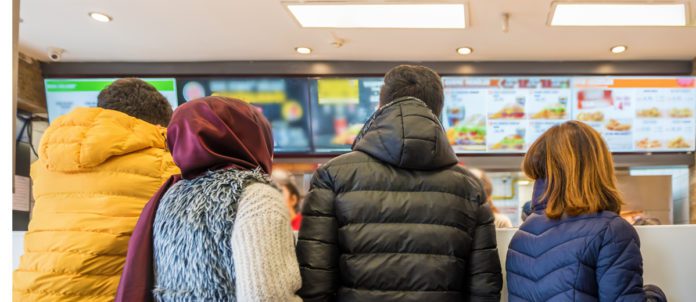Doesn’t it sometimes seem that there is a quick-service restaurant (QSR) chain located on every street corner in Canada? I pass by as many as seven Tim Hortons, three McDonald’s and three Starbucks locations on my short 10-km drive to The NPD Group’s Toronto office, although it’s been months since I’ve made that trip. Our ReCount® restaurant census reports there were more than 26,000 QSR chain outlets in Canada at the end of 2020, while the number of independent restaurant outlets totalled just over 9,000. Each of these figures declined by about 1,000 units in 2020. When we launched ReCount in 1999, the number of chain and independent outlets were about equal at 15,000. Chain outlets have grown every year, but since 2008, the number of independents has declined steadily.
Against the seemingly endless expansion initiatives of the chains, how does an independent QSR compete? Better than you might expect. For calendar year 2021, our CREST® foodservice industry tracking service reports independent QSR restaurants captured just over nine per cent of total QSR occasions. That’s up by almost one full point from 2020 and back in line with historical shares. It may not seem like much until you consider that each share point represents more than 40 million occasions. Independent QSRs’ revenue performance was even stronger, having returned to pre-pandemic levels ahead of the total QSR segment.
Of course, increased visits and dollars don’t necessarily equal profitability. During this time of rising input and operating costs, the average spend per independent restaurant visitor has risen by just one per cent compared to a QSR segment average of three per cent. Many factors can influence this measure, but it seems the independent operator may be trying to use price to attract and retain customers. This can be an effective marketing strategy at times, but it could also become a trap.
A more effective way to compete on price, without necessarily discounting, is through some sort of dealing, such as meal bundles, coupons (digital or paper) and buy-get offers. The deal rate has been rising in the QSR segment for many years, but it is an area where independents trail. These marketing techniques are a terrific way to deliver perceived value to the consumer and can be an effective way to mask a price increase.
Marketing strategies cannot focus on price alone. Instead, this operator set should identify the characteristics that make them unique from their chain competitors and promote those features. It could be menu, service, quality, or authenticity. Offering meal kits, groceries, or cross-promotions with other local businesses is another unique way to stand out from the chains. Consumers tell us in our studies that they are eager to support local businesses. Promoting this “love of local” at every occasion can be an effective marketing tool.
One final way for independents to compete against the big chains is through delivery, where they already capture 20 per cent share of this booming service, representing almost 20 per cent of their orders. Even though all the major chains also offer delivery, they have relied on their drive-thru infrastructure to propel them through the pandemic. Consequently, delivery represents just three per cent of their orders. Delivery apps are the great equalizer: They permit any business to stand out in the digital world in a way they never could on a crowded streetscape.
The plight of the independent restaurateur has been well reported since the early days of the pandemic. Facing lockdowns, operating restrictions, and the ongoing social and economic challenges that we all contend with, this group of business owners has sustained an unprecedented number of closures. While many of their challenges continue, it is encouraging to see many independent QSR restaurants have endured. That means my commute to the office, whenever it resumes, will continue to offer some diversity when it comes to restaurant selection.
Vince Sgabellone is a foodservice industry analyst with The NPD Group. He can be reached at [email protected]


















